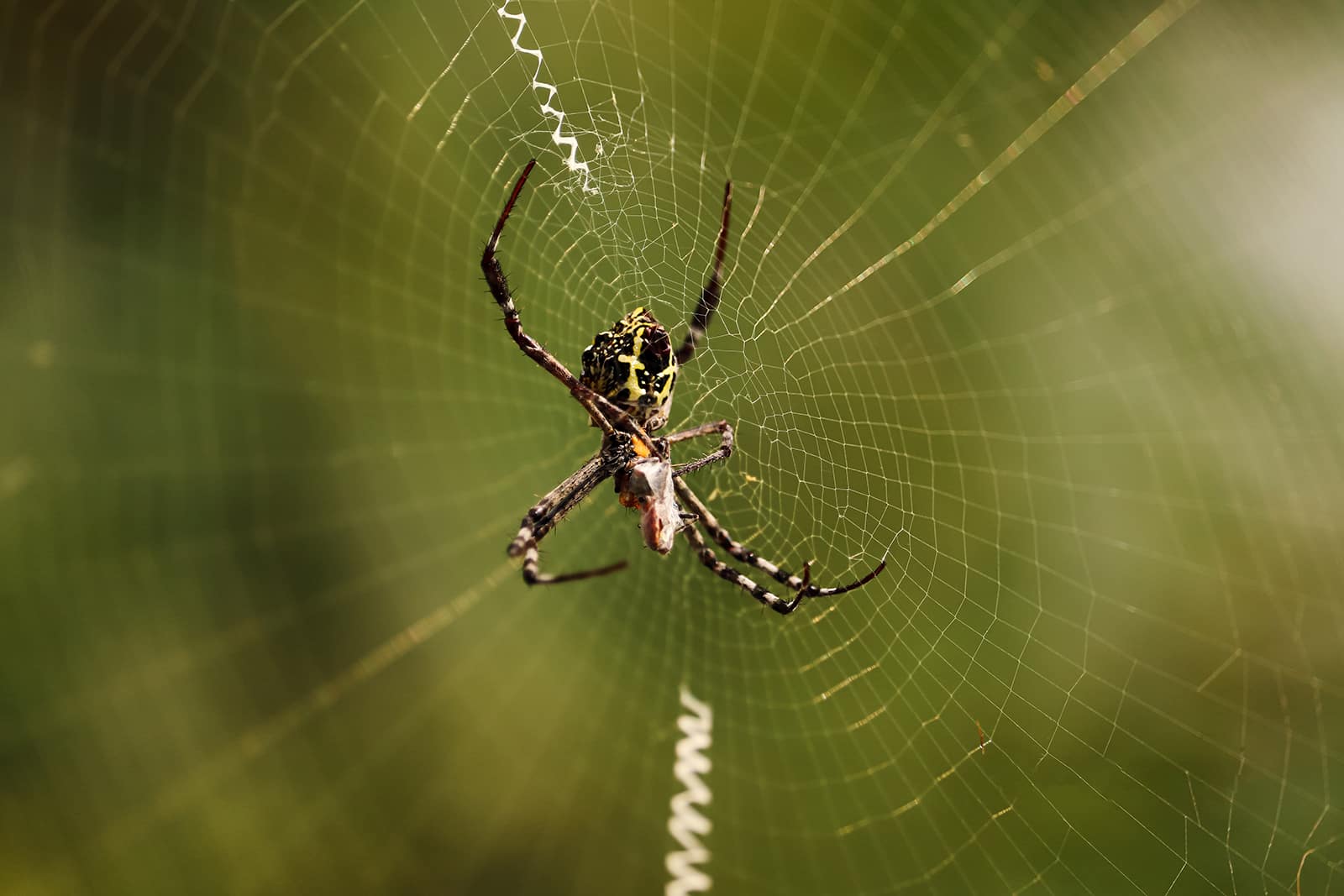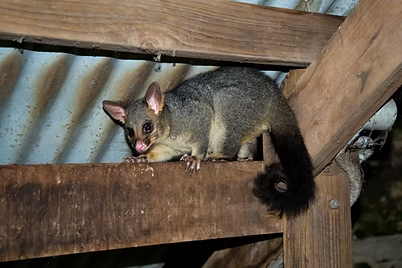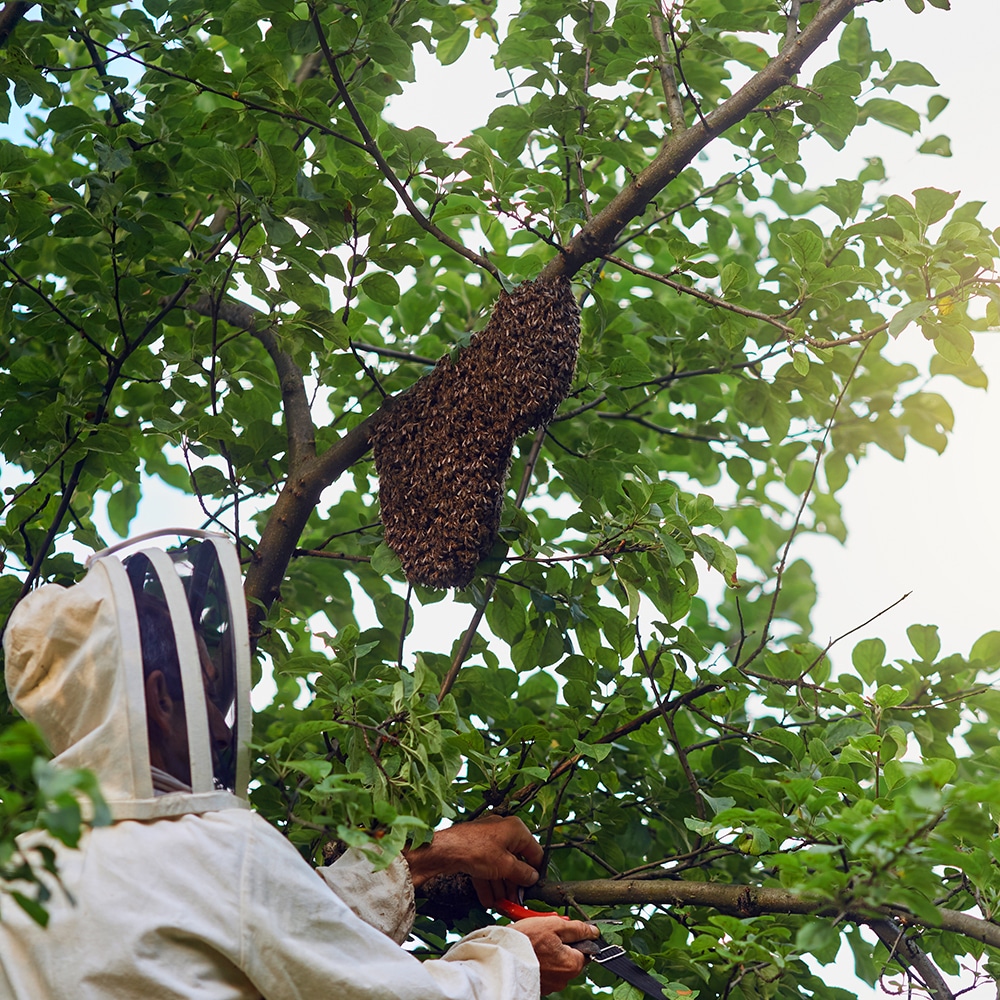
Why Do Spiders Come Back And Why
Why Do Spiders Come Back And Why On The Central Coast NSW. Responsive Proactive Solutions. Detail-focused for lasting results. Call Adam on 0431 222 894
Signs You Have a Possum in Your Roof and How to Remove It is a common concern for many homeowners. If you live on the Central Coast NSW, you might find these critters nesting above you. For reliable and trustworthy help, reach out to Vital Pest Control.
What noises do possums make in roofs?
Possums in roofs create a variety of noises. You might hear scratching, scurrying, or even thumping. These sounds often occur at night since possums are nocturnal. Listening for these noises can help confirm their presence.
How to check for possum droppings
Possum droppings can be a major sign. Look for small, cylindrical droppings in your roof space. These can indicate a possum problem. Always wear gloves when handling droppings for safety.
Why do possums prefer nesting in roofs?
Roofs offer shelter and warmth. Possums look for safe spaces away from predators. Your roof provides an ideal environment, especially during colder months. Understanding their preference can aid in prevention.
How to confirm possum entry points
Inspect your roof for gaps or broken tiles. These are common entry points for possums. Check around vents and chimneys too. Sealing these can prevent future infestations.
What damage do possums cause in homes?
Possums can damage insulation and wiring. Their droppings can also stain ceilings. Over time, these issues can become costly if not addressed promptly. Early detection is key to minimizing damage.
How to safely remove a possum from the roof
Consider hiring professionals for humane removal. They have the expertise to handle possums safely. DIY methods can be risky and may harm the animal. Professionals ensure the possum is relocated without stress.
How to seal entry points to prevent possum return
Use durable materials to seal entry points. Metal mesh and sturdy boards work well. This prevents possums from re-entering. Regular inspections ensure your home remains possum-free.
What deterrents work best for possums in roofs?
Ultrasonic devices and motion-activated lights can deter possums. These methods are non-intrusive and effective. Regular maintenance and vigilance can also keep possums away.
Discover how we can help you today! Contact Vital Pest Control for fast and responsive solutions tailored to Central Coast NSW.

If you’re living in Central Coast NSW and suspect a possum might be sharing your roof, understanding the noises these nocturnal creatures make can be a crucial first step. Recognising these sounds can help you determine whether you’re dealing with a possum problem and need professional pest control assistance.
Scratching and Scurrying
Possums often make scratching noises as they move through your roof space. These creatures have sharp claws, which they use to grip onto surfaces. You’ll likely hear these sounds at night, as possums are nocturnal and become active after dusk. The scurrying noise can vary in intensity but often has a distinctive pattern, as possums quickly dash from one area to another.
Thumping and Bumping
Possums are not dainty movers. When they travel across your roof, they can create thumping sounds. This noise is due to their relatively heavy bodies hitting the ceiling or walls. It may seem like something larger is moving around, which can be startling if you’re not expecting it. These noises often occur when possums are in search of food or a comfortable nesting spot.
Chattering and Hissing
In addition to physical noises, possums can vocalise a range of sounds. Chattering and hissing are common when they communicate with each other, especially if they feel threatened. These vocalisations might be accompanied by clicking or lip-smacking sounds. If you hear this, it’s a strong indication that possums have taken up residence and are establishing their territory.
Possums are a common problem on the Central Coast, especially when they take up residence in your roof. Identifying possum droppings is a crucial step in addressing the issue. With some helpful tips, you can easily distinguish possum droppings from those of other pests.
Spotting Possum Droppings
Possum droppings are quite distinctive. They are usually dark brown or black and about the size of a jellybean. These droppings have a slightly tapered end, which differentiates them from rat droppings. If you find droppings that match this description in your roof or garden, it’s a strong indicator of a possum presence.
Location of Droppings
Possums often leave their droppings in specific areas. Check roof spaces, gutters, and garden beds. These creatures tend to follow regular paths, so finding a trail of droppings can reveal their routes and entry points. Focus on areas where droppings seem concentrated, as this could indicate a nesting site.
Health Precautions
When handling possum droppings, always use gloves and a mask. Their droppings can carry harmful bacteria. Clean the area with disinfectant to minimise health risks. Ensure you dispose of the droppings carefully to prevent contamination.
Possums often find roofs an ideal nesting ground, especially on the Central Coast in NSW. Understanding why these marsupials choose roofs can help in addressing and preventing infestations effectively.
Protection from Predators
Roofs offer excellent protection from natural predators such as owls and snakes. Elevated and enclosed, roofs provide a secure environment where possums can raise their young without constant threat from outside dangers. This safety makes roofs a favoured spot for these nocturnal creatures.
Shelter from Weather
Possums are drawn to roofs for the shelter they provide from the elements. The structure of a roof offers warmth in cooler months and a dry refuge during heavy rains. This comfortable and stable environment makes nesting in roofs an attractive option for possums seeking respite from harsh Australian weather.
Access to Food
Roofs often serve as strategic locations near abundant food sources. Gardens, fruit trees, and household scraps can offer a steady supply of food, making roofs convenient nesting spots. This proximity to nourishment supports their survival and encourages them to settle in residential areas.
Easy Entry Points
Many homes on the Central Coast have easy access points that possums can exploit. Gaps in roofing, broken vents, or loose tiles can serve as entryways. Once inside, the space provides a perfect habitat. Identifying and sealing these access points is crucial in keeping roofs possum-free.
Possums can be a nuisance if they find their way into your roof. It’s crucial to identify their entry points to effectively remove them and prevent future invasions. Here’s how you can confirm possum entry points for Vital Pest Control on the Central Coast, NSW.
Check for Loose Roof Tiles
Possums are agile climbers, often exploiting loose roof tiles to access your roof space. Inspect your roof for any dislodged or missing tiles. A thorough examination can reveal these gaps where possums might enter. Ensure you check around the entire perimeter, as possums will take advantage of any opportunity to slip inside.
Look for Damage Around Eaves and Gutters
Eaves and gutters can also be vulnerable spots. Examine these areas for signs of damage, such as gnaw marks or bent metal. Possums use their sharp claws to widen gaps, making their entry easier. Pay attention to any unusual debris or nesting materials that might indicate activity.
Inspect Vents and Chimneys
Vents and chimneys are common access points for possums. Check for signs of tampering or damage. Ensure screens are intact and chimneys have proper covers. If you notice droppings or tracks, there’s a good chance possums are using these routes.
Check for Scratching Sounds
Listen for scratching or scampering noises, especially during the night. These sounds often indicate the presence of possums. Once you identify the area where the noise originates, investigate for any openings. This auditory clue can guide you to less obvious entry points.
Possums can be more than just a nuisance when they invade homes on the Central Coast of NSW. These nocturnal creatures often seek shelter in roofs, causing various forms of damage that can be costly to repair. Understanding the potential harm possums can cause is crucial for homeowners looking to protect their properties.
Structural Damage
Possums can cause significant structural damage as they nest in roofs. They often break tiles or chew through timber to gain entry, leading to potential leaks or compromised structural integrity. Once inside, they may disturb insulation, reducing its effectiveness and increasing energy costs.
Electrical Hazards
Possums chewing on electrical wiring can create serious safety hazards. Exposed wires pose a fire risk and may lead to costly electrical repairs. This behaviour not only endangers the home but also the possums themselves.
Health Risks
Possum droppings and urine can create unsanitary conditions, leading to unpleasant odours and potential health risks. These waste products can attract other pests and contribute to respiratory issues for the home’s occupants.
Noise Disturbance
Noisy possums can disrupt the peace of a home, especially at night when they are most active. Their movements and vocalisations can be particularly disturbing for residents trying to get a good night’s sleep.
Possums can be a nuisance when they decide to make your roof their home. Their nocturnal activities can lead to sleepless nights and potential damage. Understanding how to safely remove a possum from your roof is crucial for maintaining the structural integrity of your home and ensuring the well-being of these native creatures.
Identifying Entry Points
Before you attempt any removal, locate how possums enter your roof. Common entry points include gaps in roofing tiles, vents, or loose eaves. Carefully inspect these areas during daylight to avoid any surprises. Once identified, plan for sealing these points after the possum is safely removed.
Using One-Way Doors
Installing a one-way door can be an effective method. These doors allow possums to exit but not re-enter. Place the door over the identified entry point. Monitor the door to confirm the possum has left, then seal the entry to prevent return visits.
Professional Assistance
If you’re uncomfortable handling the situation yourself, consider hiring professionals like Vital Pest Control. They possess the expertise to safely and humanely remove possums. Professionals can also provide guidance on preventing future infestations, ensuring peace of mind.
Keeping possums out of your roof is crucial to avoid damage and maintain peace. Vital Pest Control on the Central Coast NSW offers insights into sealing entry points to prevent these nocturnal creatures from returning.
Identifying Access Points
Start by carefully inspecting your home, focusing on the roof and eaves. Look for gaps, broken tiles, or loose boards. Possums can squeeze through surprisingly small openings, so it’s essential to be thorough. Pay attention to any signs of wear or potential entry points, as these are often the paths possums use.
Using Appropriate Materials
Once you’ve identified potential entry points, it’s time to seal them. Use sturdy materials like metal mesh or hardware cloth, which possums can’t chew through. Avoid using materials that are easily damaged or degraded. Ensure that all seals are tight and secure, leaving no room for future access.
Regular Maintenance Checks
To ensure possums don’t return, conduct regular checks of your home’s exterior. Look for new gaps or damage, especially after severe weather. Regular maintenance not only keeps possums out but also protects your home from other potential pests.
By following these steps, you can effectively seal entry points and protect your home from possum invasions. Regular vigilance and proper sealing techniques will keep your roof possum-free and your home secure.
Possums in roofs can be a pesky problem for homeowners on the Central Coast. With their scratching and scurrying, they disrupt sleep and potentially cause structural damage. To tackle this issue, understanding effective deterrents is key.
Natural Repellents
Natural repellents work well because they make the environment uncomfortable for possums. Try using garlic or camphor as these strong scents often drive possums away. Spread these around entry points or roof spaces. Regularly refreshing these repellents ensures their effectiveness.
Exclusion Techniques
Seal entry points thoroughly. Inspect your roof and attic for gaps or holes. Use wire mesh or metal sheeting to block access. This prevents possums from sneaking into your roof. Remember, possums are excellent climbers, so check all possible entry points.
Motion-Activated Devices
Motion-activated lights or sprinklers can scare possums away. These devices create an uncomfortable environment, deterring possums from returning. Install them near suspected entry points for maximum impact. Consistency in using these deterrents is crucial for long-term success.
By implementing these strategies, you can effectively deter possums from making a home in your roof, ensuring peace and quiet in your household.
Possums are intriguing creatures known for their nocturnal habits, especially on the Central Coast of NSW. Understanding their nightly activity is crucial for identifying signs of their presence and managing their removal effectively.
Adaptation to Avoid Predators
Possums have evolved to be active at night as a survival tactic. In the dark, they can avoid many predators that hunt during the day. This nocturnal lifestyle reduces their chances of becoming prey, allowing them to thrive in various environments, including urban areas.
Searching for Food
Nighttime provides possums with an opportunity to forage without much competition. They are omnivorous, often searching for fruits, leaves, and small insects during the night. This feeding behaviour explains why you might hear rustling sounds in your roof or garden at night, a common sign of possum activity.
Navigating Cooler Temperatures
The cooler night temperatures are ideal for possums, helping them conserve energy. Heat can be a stressor for these creatures, and the night offers a more comfortable climate for movement and activity. This preference for cooler conditions is another reason they are more active after dark.
Possums are a common nuisance on the Central Coast NSW, often invading roofs and causing damage. When it comes to pest control, many residents wonder if possum repellents are effective solutions. Understanding the effectiveness of these repellents can help you make informed decisions about managing possums in your home.
Natural Repellents: A Gentle Approach
Natural repellents, like garlic or peppermint oils, are popular among those seeking non-toxic solutions. These substances deter possums through strong odours, making your roof space less inviting. However, the effectiveness depends on consistent application and may not be a long-term solution for persistent invasions.
Electronic Repellents: High-Tech Defence
Electronic repellents emit ultrasonic sounds to keep possums at bay. These devices are easy to install and can cover large areas. While they offer a more modern approach, results vary. Some homeowners report success, while others notice little difference. Regular monitoring and device adjustments might be necessary to maintain effectiveness.
Commercial Repellent Sprays: Convenient Yet Questionable
Commercial sprays are readily available and claim to repel possums with minimal effort. These products are convenient but may require frequent reapplication. Efficacy can differ based on the product’s formulation and the specific possum behaviour in your area. Testing a few options may be needed to find the most suitable solution.
Cleaning and disinfecting possum nesting areas is crucial in maintaining a healthy environment in your home. On the Central Coast, NSW, possums often find refuge in roofs, making it essential to handle their removal and cleanup with care. Vital Pest Control provides a guide to ensure your home remains safe and sanitary after possum removal.
Identify the Nesting Area
Begin by confirming the exact location of the possum nest. Look for signs like droppings, nesting materials, or a musty smell. Knowing the precise spot helps in targeted cleaning, ensuring no corner is left unchecked. This step is essential for effective disinfection and preventing future infestations.
Remove Debris and Contaminants
Carefully remove any nesting materials, droppings, or debris using gloves and protective gear. This reduces the risk of diseases carried by possums. Dispose of these materials in sealed bags to prevent contamination. Clearing the area sets the stage for thorough cleaning and sanitisation.
Disinfect the Area
Use a high-quality disinfectant to clean the affected area. Ensure the product is safe for household use but strong enough to kill germs and bacteria. Apply the disinfectant generously, focusing on areas with visible residue. This process not only cleans but also restores hygiene effectively.
Ventilate and Monitor
After cleaning, ventilate the space to eliminate any chemical residue smell. Keep an eye on the area for any signs of possum return. Regular monitoring ensures your efforts remain effective, keeping your home possum-free and healthy.
Possums sneaking into your attic can cause all sorts of trouble. They may seem cute, but these nocturnal creatures can wreak havoc on insulation and wiring, not to mention the noise they bring. Vital Pest Control on the Central Coast NSW offers solutions to keep these pesky marsupials at bay.
Seal Entry Points
First, inspect your home’s exterior for any gaps or openings. Possums are clever climbers, so even a small hole can be an open invitation. Seal these with sturdy materials like metal mesh or wood to ensure they stay out. Pay attention to vents, chimneys, and eaves, as these are common entry points.
Trim Overhanging Branches
Possums often use trees to access your roof. Trim any overhanging branches that provide a bridge to your attic. This not only helps in preventing possum entry but also reduces the threat of other pests. Regular tree maintenance is a simple yet effective deterrent.
Install Motion-Activated Lights
Possums prefer dark, quiet spaces. Installing motion-activated lights around your home can scare them off. These lights surprise and deter them from getting too close. It’s an easy way to keep your attic free from unwanted visitors.
By following these steps, you create a less inviting environment for possums, ensuring your attic remains undisturbed. Protecting your home from these critters is just one part of maintaining a safe and sound environment.
Having a possum in your roof can be more than just a nuisance; it can lead to significant damage and health concerns. Knowing when to call a wildlife removal expert is crucial for vital pest control on the Central Coast, NSW.
Unusual Noises
If you hear scratching, thumping, or scampering sounds coming from your ceiling, it might be time to call in the professionals. Possums are nocturnal, so these noises are usually more noticeable at night. Ignoring these sounds can lead to more serious infestations.
Persistent Odours
A strong, musky odour in your home could indicate a possum presence. Possums often leave droppings and urine, which can create an unpleasant smell and unsanitary conditions. A wildlife removal expert can safely handle this issue, ensuring your home remains clean and odour-free.
Damage to Property
Possums can cause significant damage. They may chew through electrical wires, insulation, or wooden structures. If you notice signs of gnawing or structural damage, it’s essential to seek professional help immediately. Addressing the problem early can prevent costly repairs in the future.
Visible Signs of Entry
Keep an eye out for entry points like broken roof tiles or disturbed vents. If you spot these signs, it’s best to contact a wildlife removal expert. They can assess the situation and implement measures to prevent future entries, safeguarding your property.
Possums are common in many Australian regions, including the Central Coast of NSW. While they might seem harmless, having a possum nest in your roof can pose potential risks to human health and property. It’s crucial to understand these dangers to address them effectively.
Health Risks Associated with Possum Nests
Possums can carry various diseases that may affect humans. Their droppings and urine can harbour harmful pathogens, leading to respiratory issues or other infections if inhaled or contacted. Moreover, possums often attract other pests like mites and ticks, which can spread additional diseases. Maintaining a safe environment requires addressing these health risks promptly.
Structural Damage to Property
Possum nests can cause significant structural damage over time. These creatures are known to chew through electrical wiring, leading to potential fire hazards. Their nesting habits can also compromise insulation and roofing materials, resulting in costly repairs. Regular inspections and preventive measures can help mitigate these damages.
Noise and Disturbance
Possums are nocturnal, meaning they are most active during the night. Their movements can create significant noise disturbance, affecting sleep and daily activities. This disturbance often prompts homeowners to seek professional pest control services, ensuring peace of mind and restoring tranquillity to their homes.
Possums can be a real nuisance when they invade your roof space. Once you’ve identified and removed them, the next step is ensuring they don’t return. On the Central Coast of NSW, possums are a common issue, so it’s vital to take preventive measures to keep them at bay.
Seal Entry Points
Inspect your roof and walls for any gaps or openings. Possums can squeeze through surprisingly small spaces. Use sturdy materials like metal mesh or timber to block these entry points. Make sure vents are covered securely. Regular checks can help ensure new entry points don’t appear over time.
Trim Trees and Shrubs
Possums often use trees and shrubs as ladders to access roofs. Trim back any branches that hang over or near your house. This simple action can significantly reduce the risk of possums finding a way back into your roof space.
Install Possum Deterrents
Consider installing deterrents like motion-activated lights or ultrasonic devices. These can scare possums away before they get too close. Another option is to spread possum repellent around your property, creating an uncomfortable environment for them.
By taking these steps, you can protect your home from future possum invasions, ensuring peace of mind. Regular maintenance and vigilance are key to keeping possums away for good.
Please leave your details in the form and we will call you back the same day.
So that we can process your enquire efficiently please leave as many details as possible and upload any relevant images. (.jpg and .png format)

Why Do Spiders Come Back And Why On The Central Coast NSW. Responsive Proactive Solutions. Detail-focused for lasting results. Call Adam on 0431 222 894

Building a Long Term Residential Pest Protection Plan For Home Owners On The Central Coast NSW. Responsive Proactive Solutions. Detail-focused for lasting results. Call Adam on 0431 222 894

How to Protect Your Home from Wasp Infestations On The Central Coast NSW. Responsive Proactive Solutions. Detail-focused for lasting results. Call Adam on 0431 222 894